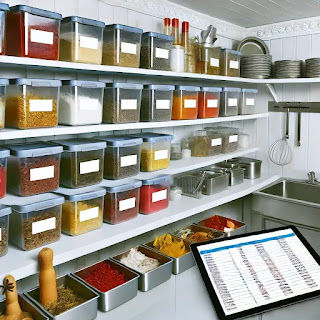Search This Blog
Dine to Success is your go-to resource for mastering the art of restaurant management. Whether you're a seasoned restaurant owner or just starting out, our blog provides actionable strategies and insights to help you boost efficiency, manage costs, motivate your team, and enhance customer experience.
Featured
- Get link
- X
- Other Apps
How to Set Restaurant Menu Prices: 10 Proven Strategies to Boost Profits
Setting the right prices for your restaurant menu is crucial for maximizing profits and ensuring long-term success. A well-crafted pricing strategy can significantly impact your bottom line while keeping customers satisfied. In this article, we'll explore ten proven strategies to help you optimize your menu pricing and boost your restaurant's profitability.
1. Understand Your Costs
Before setting prices, it's essential to have a clear understanding of your costs. Calculate the food cost percentage for each dish by dividing the cost of ingredients by the menu price. Aim to keep your food cost percentage between 28% and 35% of the menu price, which is standard in the industry2. Implement Cost-Plus Pricing
Cost-plus pricing is a fundamental method for setting menu prices. Here's how to apply it:- Calculate the total cost of producing a dish (ingredients + labor + overhead).
- Determine your desired profit margin.
- Add the profit margin to the total cost to arrive at the menu price.
3. Consider Market Factors
While cost-plus pricing forms the basis of your strategy, don't operate in a vacuum. Research your competitors' prices to ensure you remain competitive. However, remember that your goal is to offer superior value, not necessarily the lowest price4. Use Psychological Pricing Techniques
Employ psychological pricing tactics to make your menu more appealing:- Charm Pricing: Use prices ending in .99 or .95, as these tend to be perceived as significantly lower than rounded numbers.
- Menu Engineering: Strategically place high-profit items in prominent positions on your menu, such as the upper-right corner, where customers' eyes tend to go first.
- Decoy Pricing: Include a high-priced item to make other dishes seem more reasonably priced in comparison1.
5. Implement Dynamic Pricing Strategies
Don't be afraid to adjust your prices based on various factors:- Time-Based Pricing: Offer happy hour discounts and early bird specials to attract customers during slower periods.
- Seasonal Adjustments: Adjust prices based on the seasonality of ingredients or fluctuations in demand1.
6. Utilize Bundle Pricing
Offer combo meals and set menus that provide value to customers while ensuring a good profit margin for your restaurant. This strategy encourages customers to spend more while feeling they're getting a good deal7. Regularly Review and Adjust Prices
Your pricing strategy shouldn't be set in stone. Regularly review and adjust your prices based on:- Changes in ingredient costs
- Shifts in market trends
- Customer feedback
- Your overall financial performance1
8. Optimize Your Menu Design
Your menu design can significantly impact customer choices and spending:- Strategic Placement: Place your most profitable dishes in the upper-right corner of the menu or at the top of sections.
- Highlight Specials: Use boxes, bold text, or different colors to draw attention to high-margin items.
- Limit Menu Options: Offering too many choices can overwhelm customers. Focus on a limited number of items per category1.
9. Use Descriptive Language
Use appetizing descriptions that highlight the key ingredients and flavors of each dish. Words like "succulent," "crispy," "roasted," and "house-made" can make your dishes sound more appealing and justify higher prices10. Conduct Regular Food Cost Audits
Perform regular food cost audits to ensure your pricing remains aligned with your costs:- Calculate the actual food cost percentage for each menu item using your POS data.
- Compare actual food costs with theoretical costs to identify any discrepancies.
- Adjust menu pricing if your food cost percentage is too high1.
Conclusion
Setting the right menu prices is both an art and a science. By carefully considering your costs, market factors, and customer perceptions, you can develop a pricing strategy to offer high-quality dishes at fair prices while maintaining healthy profit margins. Remember, the key to successful menu pricing is finding the sweet spot where your prices are high enough to be profitable, but low enough to keep customers returning. Regularly review and adjust your pricing strategy to ensure long-term success in the competitive restaurant industry.By implementing these ten proven strategies, you'll be well on your way to optimizing your menu prices and boosting your restaurant's profitability. Remember, pricing is an ongoing process of analysis, adjustment, and refinement—but it's well worth the effort for your restaurant's long-term success.Ready to take your restaurant to the next level? Then make sure to begin practicing these strategies today and see the difference they can make!For more in-depth guidance on creating a winning restaurant business plan, check out my comprehensive book: "The Ultimate Restaurant Success Handbook: Scaling, Managing, and Sustaining Long-Term Growth." available on Amazon: https://www.amazon.com/dp/B0DJQDVC12
This resource provides step-by-step instructions, real-world examples, and expert insights to help you create a business plan that sets your restaurant up for success. Don't start your culinary journey without it!
- Get link
- X
- Other Apps
Popular Posts
10 Proven Strategies for Efficient Stock Reordering and Waste Prevention in 2024
- Get link
- X
- Other Apps
10 Essential Tips for Managing Restaurant Inventory Efficiently
- Get link
- X
- Other Apps

Comments
Post a Comment